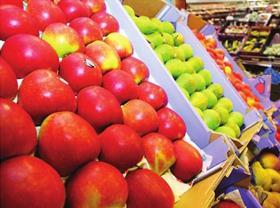
Mexican apple production for the 2010/11 season (which lasts from August until July) is forecast at 540,000 tonnes, a 3.7 per cent decrease compared with 2009/10, while total pear production is estimated to fall marginally to 23,200 tonnes for 2010/11 (July/June), according to a new report from the US Department of Agriculture (USDA).
Trade sources indicate that Chihuahua (Mexico’s main apple producing state) suffered a frost in May, which, coupled with a low year in the production cycle, accounts for the decrease in apple volume.
Chihuahua accounts for 43 per cent of total area planted with apples in Mexico while Durango represents 17 per cent. Coahuila and Puebla each contain 12 per cent of planted area.
Growers indicated that planted area is not expected to expand in the future due to higher production costs, limited credit availability, and water scarcity, the USDA said.
However, industry sources reported that large-scale and technologically sophisticated growers in Chihuahua are renewing old orchards and planting with greater tree densities.
In general, the report claimed that producers in Chihuahua are said to use more advanced production technology than other states and yield higher-quality apples.
According to growers, about 40 per cent of the apple area in Chihuahua utilises advanced technology and yields are forecast to continue increasing due to greater planting density.
In order to remain competitive, producers in Chihuahua are continuing to replace a number of older orchards with higher yielding (about 80 tonnes/ha) and higher density apple trees (800 trees/ha or more). In addition, they are using advanced technology and newer irrigation systems.
Mexico’s pear production, meanwhile, is relatively low year-on-year, with the 2010/11 crop forecast to reach 23,200 tonnes, down slightly on last season, according to the USDA.
The agency said it does not expect pear production to show significant increases in the near future either, as growers are not heavily investing in this crop due to the high cost of production.
Indeed, a lack of investment, high costs of production, scarce water supplies in pear producing regions, and disease problems have limited domestic production growth.
But still, the USDA reported that some growers have started to experiment with planting more disease-resistant and longer shelf-life varieties.



